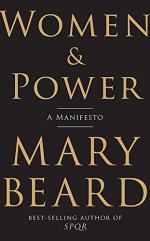|
This section contains 1,112 words (approx. 3 pages at 400 words per page) |

|
Summary
After looking examples that demonstrate the suppression of female voices in the classical period, Beard turns to examples from early modern history, and identifies a tendency in speeches by women to be exclusively about the weaknesses of women. One example is Queen Elizabeth, who, during a 1588 address to the soldiers at Tilbury during the Spanish Armada, was recorded to have said that, despite her feminine “weakness,” she had the “heart and stomach of a king” (22). Another example is ex-slave and abolitionist Sojourner Truth’s 1851’s “Ain’t I a Woman” speech. Despite these examples, Beard asserts that their words have been mythologized to fit a certain conception of women speaking in history. Turning to contemporary US politics, she details how the recent silencing of Elizabeth Warren in the Senate – which occurred when she attempted to read a letter by Coretta Scott King – did...
(read more from the Section 1, Part 2 Summary)
|
This section contains 1,112 words (approx. 3 pages at 400 words per page) |

|




